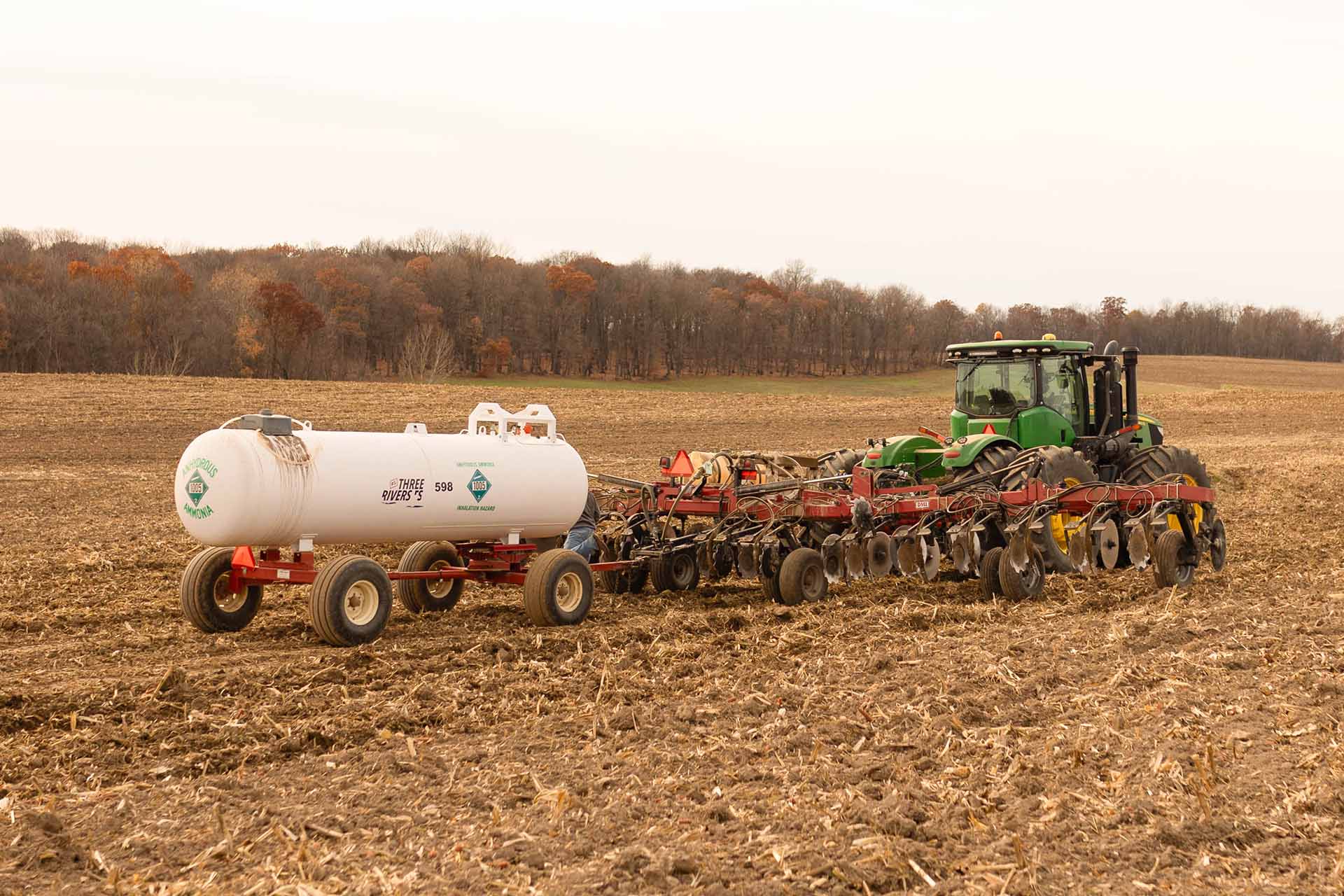
(Photo: Iowa Soybean Association / Joclyn Bushman)
Improve your fall anhydrous application with these three tips
October 17, 2024 | Kriss Nelson
As the end of harvest nears, farmers will switch focus to their post-harvest activities, which, for some, include fall-applied anhydrous.
According to the United States Department of Agriculture’s (USDA) bi-weekly Iowa Production Cost report released Oct. 4, the average price for anhydrous is $678 per ton.
Whether a farmer is weighing the economic or environmental consequences of fall-applied anhydrous, Iowa Soybean Association Research Agronomist Alex Schaffer suggests considering these 3 best practices.
1. Soil temperatures
Wait until the soil temperature at 4-inches reaches 50 degrees and is expected to drop further before applying fall anhydrous.
Soil temperatures can be monitored by accessing daily soil temperature analysis maps from Iowa State University by visiting here.
“When soils are below 50 degrees, the microbial activity that converts ammonium to nitrate slows,” says Schaffer. “Nitrate is not held tightly to the soil profile and is prone to leaching into groundwater.”
2. Proper application
Pay extra attention to the quality of the job you are doing when applying anhydrous ammonia, especially when applying it to dry soils.
When anhydrous ammonia is applied to a field, it converts to ammonium, which requires water. Ammonium is the nitrogen form you want to hold tightly to the soil profile.
“There is always some soil moisture, even if it is quite low into the soil profile, so this reaction will happen but will be slower in dry conditions,” says Schaffer. “The applicator needs to pay extra close attention to application depth and the soil closing behind the knife. In dry conditions, nitrogen will remain in its anhydrous ammonia form and will be prone to travel up through the cracks of the soil if not sealed properly.”
The deeper the anhydrous can be applied, the more likely it is to find moisture. The conversion to ammonium will happen faster, and the implement can do a better job of sealing the trench.
Although the product’s potent odor is common during application, Schaffer notes it should not remain in the air.
“You should not be able to smell anhydrous ammonia in the air after finishing a round in the field,” says Schaffer. “If you do, this is nitrogen lost to the environment. In this case, you should adjust the depth, closing equipment or wait for better conditions.”
3. Minimize losses
Using a nitrogen stabilizer could be an option to slow the activity of nitrogen-converting microorganisms.
“Keep in mind, it’s not only a water quality concern when nutrients leach through the soil, but this can also mean keeping inputs on the farm,” says Schaffer. “Profitability is most important when running a successful business, and nitrogen fertilizer making it anywhere besides into the corn plant next spring is money lost.”
Farmers should consider not placing all their eggs in one basket by considering a split of fall and in-season side-dress nitrogen applications.
“I understand the logistics of farming and the need to get some of this work out of the way in the fall when conditions are right, but I would not recommend applying 100% of your corn crop’s nitrogen requirements to the field in the fall,” he says. “Predicting the weather in the coming months is nearly impossible.”
This growing season is a perfect example.
“Look back to the mild winter of 2023-2024, which was followed by some heavy rains in the spring,” says Schaffer. “Although the 50-degree soil temperature slows microbial activity down, it doesn’t completely stop until the soils are frozen. This means in a mild December and January, ammonium was still being converted to highly leachable nitrates.
“When the first heavy spring rains arrive, they move down through the soil profile and take the nitrate with it down into the groundwater, making it unavailable to the corn crop.”
A high rate of anhydrous can also contribute to losses during application.
“The more product being applied in a single pass means the more anhydrous ammonia that has to be converted and more product that needs to be sealed into the soil,” he says. “This is another reason to consider split applying nitrogen.”
Solutions to nitrogen rate and time questions could be found by participating in an Iowa Nitrogen Initiative study this fall or next spring.
For more information, contact Schaffer at aschaffer@iasoybeans.com or 815-274-2998.
Back